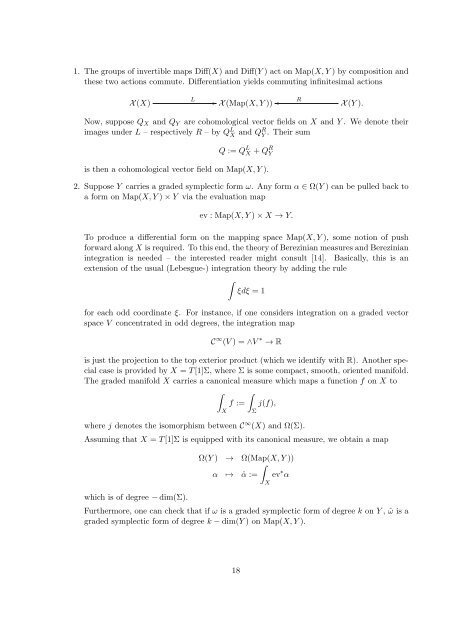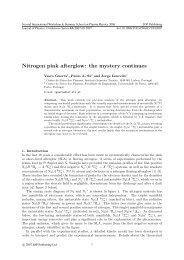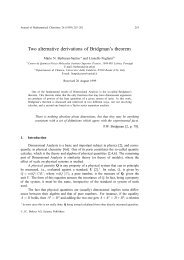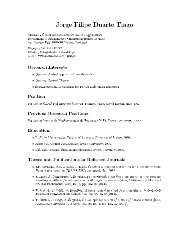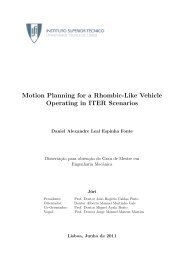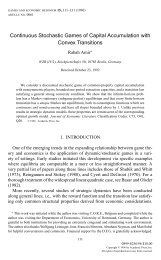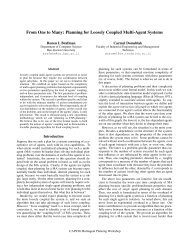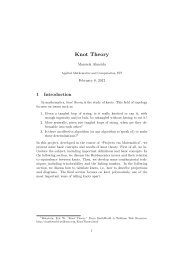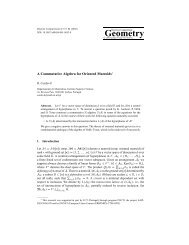Introduction to supergeometry
Introduction to supergeometry
Introduction to supergeometry
Create successful ePaper yourself
Turn your PDF publications into a flip-book with our unique Google optimized e-Paper software.
1. The groups of invertible maps Diff(X) and Diff(Y ) act on Map(X, Y ) by composition and<br />
these two actions commute. Differentiation yields commuting infinitesimal actions<br />
X (X)<br />
L X (Map(X, Y )) R<br />
X (Y ).<br />
Now, suppose Q X and Q Y are cohomological vec<strong>to</strong>r fields on X and Y . We denote their<br />
images under L – respectively R – by Q L X and QR Y<br />
. Their sum<br />
Q := Q L X + Q R Y<br />
is then a cohomological vec<strong>to</strong>r field on Map(X, Y ).<br />
2. Suppose Y carries a graded symplectic form ω. Any form α ∈ Ω(Y ) can be pulled back <strong>to</strong><br />
a form on Map(X, Y ) × Y via the evaluation map<br />
ev : Map(X, Y ) × X → Y.<br />
To produce a differential form on the mapping space Map(X, Y ), some notion of push<br />
forward along X is required. To this end, the theory of Berezinian measures and Berezinian<br />
integration is needed – the interested reader might consult [14]. Basically, this is an<br />
extension of the usual (Lebesgue-) integration theory by adding the rule<br />
∫<br />
ξdξ = 1<br />
for each odd coordinate ξ. For instance, if one considers integration on a graded vec<strong>to</strong>r<br />
space V concentrated in odd degrees, the integration map<br />
C ∞ (V ) = ∧V ∗ → R<br />
is just the projection <strong>to</strong> the <strong>to</strong>p exterior product (which we identify with R). Another special<br />
case is provided by X = T [1]Σ, where Σ is some compact, smooth, oriented manifold.<br />
The graded manifold X carries a canonical measure which maps a function f on X <strong>to</strong><br />
∫ ∫<br />
f := j(f),<br />
where j denotes the isomorphism between C ∞ (X) and Ω(Σ).<br />
X<br />
Assuming that X = T [1]Σ is equipped with its canonical measure, we obtain a map<br />
which is of degree − dim(Σ).<br />
Ω(Y ) → Ω(Map(X, Y ))<br />
∫<br />
α ↦→ ˆα := ev ∗ α<br />
Furthermore, one can check that if ω is a graded symplectic form of degree k on Y , ˆω is a<br />
graded symplectic form of degree k − dim(Y ) on Map(X, Y ).<br />
Σ<br />
X<br />
18


